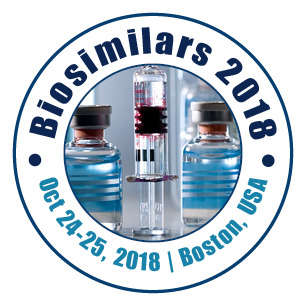
Leigh Ann M Durant
EMD, Serono, Inc., USA
Title: Latest developments in Biopharma’s patient centric drug development paradigm: How to leverage these opportunities and maximize innovation
Biography
Biography: Leigh Ann M Durant
Abstract
Statement of the Problem: Biopharma’s 50-year old drug development model – which focuses on products and healthcare providers, rather than patients and health outcomes – is failing to meet modern-day stakeholders needs. Technology-driven patients and providers, evidence-focused regulators, and cost-conscious payors are demanding more data, more innovation, improved health outcomes, and answers to questions that matter most to patients, all of which are inspiring a radical shift in our drug development paradigm. A patient-centric drug development model offers solutions to these challenges. This paper provides an overview of some of the latest developments in this new model and paradigm shift, including conceptual definitions, widely adopted patient-centric activities, new regulatory guidance, and a novel approach to estimating financial value of patient engagement, all of which provide opportunities to maximize innovation.
Methodology and Theoretical Orientation: This paper was developed from a systematic literature review of peer-reviewed and gray literature using PubMed and Google and a synthesis of peer-reviewed literature, reports, FDA guidance documents, recommendations, findings and observations from regulators, academic research centers, patient advocacy organizations, non-profit coalitions, and commentators.
Findings: Despite wanting to meet stakeholder needs and an eagerness to embrace patient-centricity, adoption of patient-centered drug development has been challenging for biopharma. Some of the latest developments in this area provide additional justification and validation for embracing this paradigm shift, however, new strategies, organizational structures, and enterprise-wide culture change are also needed to ensure wholesale organizational adoption and permanence.
Conclusion and Significance: Latest developments further support that patient-centered drug development reduces development timelines, improves data quality, increases probabilities of technical and regulatory success, and increases return on investment. However, changes in strategies, structures, and culture must occur to disrupt and supplant the existing product-focused drug development model and transition successfully and permanently to the new patient-centric model, enabling biopharma to maximize innovation.

